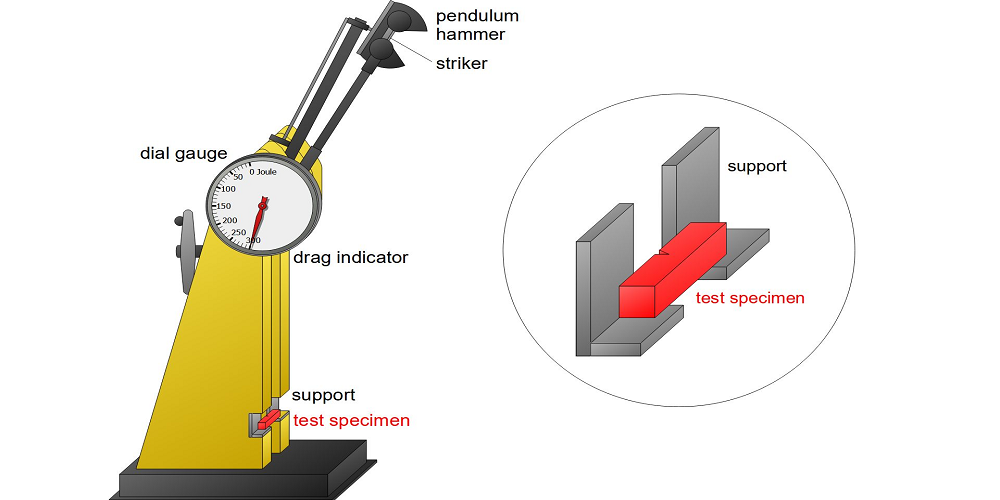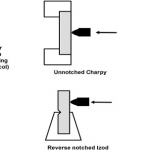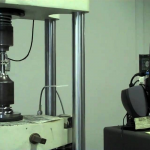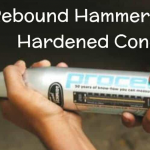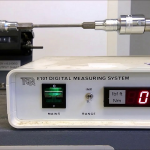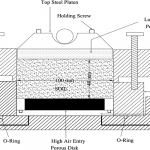Introduction
The Charpy impact test was developed by S.B. Russsel and Georges Charpy at the turn of the 20th century. Notched-bar impact test of metals provides information on failure mode under high velocity loading conditions leading sudden fracture where a sharp stress raiser (notch) is present. The energy absorbed at fracture is generally related to the area under the stress-strain curve which is termed as toughness in some references. Brittle materials have a small area under the stress-strain curve (due to its limited toughness) and as a result, little energy is absorbed during impact failure. As plastic deformation capability of the materials (ductility) increases, the area under the curve also increases and absorbed energy and respectively toughness increase. Similar characteristics can be seen on the fracture surfaces of broken specimens. The fracture surfaces for low energy impact failures, indicating brittle behavior, are relatively smooth and have crystalline appearance in the metals. On the contrary, those for high energy fractures have regions of shear where the fracture surface is inclined about 45° to the tensile stress, and have rougher and more highly deformed appearance, called fibrous fracture.
Two standardized tests, the Charpy and Izod, were designed and used extensively to measure the impact energy; Charpy v-notched impact tests are more common in practice and will be discussed in this section. Click here to go to Izod method. The apparatus for performing impact tests is shown in Figure 1 and illustrated schematically in Figure 2.
The load is applied as an impact blow from a weighted pendulum hammer that is released from a position at a fixed height h. The specimen is positioned at the base and with the release of pendulum, which has a knife edge, strikes and fractures the specimen at the notch. The pendulum continues its swing, rising a maximum height h’ which should be lower than h naturally. The energy absorbed at fracture E can be obtained by simply calculating the difference in potential energy of the pendulum before and after the test such as,

Where:
m is the mass of pendulum and
g is the gravitational acceleration.
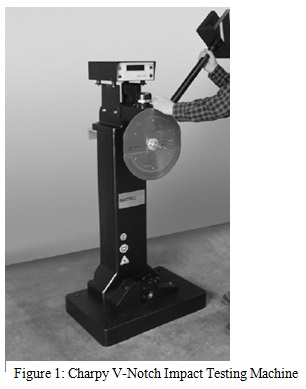
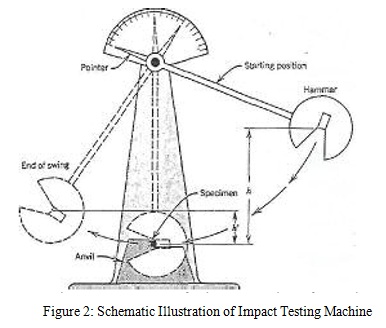
Objective(s) of the Experiment
This test is carried out to determine the energy absorbed in breaking notched steel specimens at different temperatures, using the Charpy V Notch test. The energy value is a measure of toughness of the material.
Equipments Needed
- Temperature Media (as listed below)
- Standard Charpy V-Notched Test specimens
- Impact tester
- Furnace
Procedures
Test Conditions
The test can be performed at the following four temperatures:
- -40°C (-40°F) (dry ice +isopropyl alcohol) (dry alcohol)
- -18°C (0°F) (dry ice + 30% isopropyl alcohol + 70% water)
- 4°C (40°F) (ice + water)
- 40°C (104°F) (oven)
Test Procedure
- Prepare the impact-testing machine by lifting up the pendulum and adjusting the gauge reading to zero. Since the pendulum is heavy, be careful to handle it safely.
- Remove the test specimen from the temperature medium (Figure 3) using tongs, and immediately position it on the two anvils in the impact testing machine as shown in Figure 4.
- Release the pendulum without vibration by pushing the specified button. The time between removing the specimen from the temperature medium and the completion of the test should be less than five seconds.
- Record the fracture energy required to break the specimen by reading the gauge mark.
- Observe the fracture surface appearance and estimate the % brittleness from the appearances of fracture surfaces of the specimens.
- Measure the lateral expansion of the specimen using a caliper or the lateral expansion gauge specified in ASTM E23.
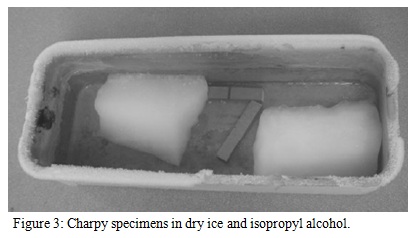

Results and Reports
- Plot energy required to cause fracture versus temperature plot
- Plot % brittleness versus temperature
- Record fracture surface appearance (each specimen and temperature)
- Record lateral expansion (each specimen and temperature)
References
- Metals Handbook, 9th ed., Mechanical Testing, Vol. 8, 1990.
- G. Dieter, Mechanical Metallurgy, SI ed., Mc Graw Hill, 1986.
- N. Dowling, Mechanical Behavior of Materials, Prentice Hall, 1993.
- ASTM and TS Standards.
- ASM Metals Handbook, 9th ed. Vol. 12.
- Mamlouk, M.S. And Zaniewski J.P., Materials For Civil and Construction Engineers, 2011
Download “Impact Test on Steel (Charpy Method)”
Impact-Test-on-Steel-Charpy.docx – Downloaded 0 times – 1.13 MB
